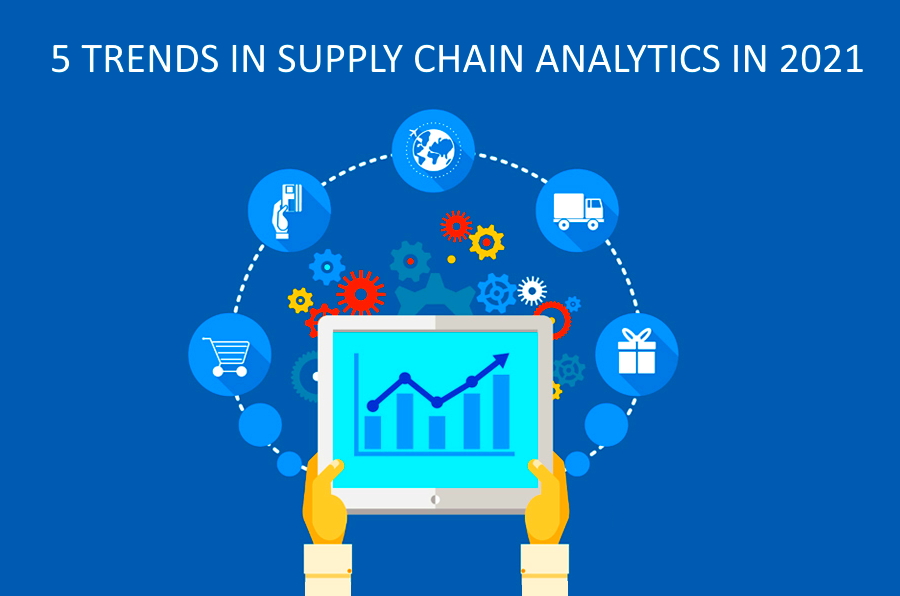
People say that “Necessity is the mother of invention”. When you consider the inventions that have been created as a result of the Covid-19 pandemic, you’ll conclude that “people” are not wrong. The Covid-19 pandemic rocked the world when people least expected it (not as though one would expect a pandemic, at least one of this magnitude) and people have had to find means of coping or going about their lives in new and dynamic ways. It is no different with Supply Chain Analytics and Optimization. Here are 5 trends in supply chain analytics and optimization in 2021.
1. COVID-19-engineered New Data
It is almost impossible to speak of anything that has not been influenced by the COVID -19 pandemic. The COVID-19 pandemic has affected the supply chain more than anything we have seen after the year 1940. The impact of the COVID- 19 pandemic had ravaged the supply chain and optimization industries so much that supply chain managers were left with no choice but to keep reinventing themselves through the deployment of dynamic strategies to stem the tides of government protocols, lockdowns, reopening the general downturn in the economy and changes in consumer behavior. Of course, these changes were not always easy to anticipate. But with the aid of certain data science teams who were themselves aided by analytic tools, supply chains made the necessary adjustments.
No doubt, this past year witnessed the failure of several business ventures that couldn’t cope with the vicissitude as a result of the pandemic. However, this past year also saw the emergence of business ventures that chose to embrace and implement optimized tools. Many of these tools were largely new and unused before the COVID-19 pandemic. Tools like international data, influenza statistics, contract analysis and data of macroeconomic for the years past. The data collected was utilized by supply chain companies to make certain predictions like when it was most viable to resume work, thus, making them more resilient against the scourge of the COVID -19 pandemic. There are now many in the supply chain analytics and optimization industries that have come to believe that given the many revamps that have taken place in the past year, it is unlikely that things will revert to how things used to be. In fact, given its impact, COVID-19-engineered New Data has become the new normal and is going nowhere. We all best get with the program!
2. Integrated Decision Support tools that have predictive components
Given the unpredictable year that 2021 has been, the need for technology with predictive support tools has continued to be on the ascendency. While predictive technology has been utilized in supply chain analytics and optimization for quite some time before the COVID-19 pandemic, it is more tasking to create fused solutions for dynamic chains that have several types of distribution channels, warehouses, or service level accords. To stem the tide, in 2021 an increasingly high number of companies are making moves toward creating tools that aid them in their search for optimization while also taking care of the complexities that may arise.
While there is a pool of predictive support tool options, it is advisable to go for one like the what-if scenario analysis. This particular software enables you to make the best decisions after helping you weigh the costs and benefits of different possible solutions. The what-if scenario analysis also allows for simultaneous scenario access between users in different organizations or departments. Besides these already amazing features, the what-if scenario analysis eases the data sharing and exchange process and ultimately ensuring that optimization occurs swiftly.
Multi-dimensional monitoring is another Supply Chain Analytics and contract analysis tool that is embedded with predictive components. This Supply Chain Analytics enables you to access and manage your Supply Chain Analytics network to increase productivity. Besides, it’s already stated benefits, add weather tracking, traffic tracking, and tracking of changes in the market to the pile and you’ll understand why it’s the option many have adopted in their bid to carry out operations with more foresight.
3. Utilization of prescriptive methods
While as we mentioned earlier, many companies have adopted technology with predictive support tools for Supply Chain Analytics, many have yet to develop an automated decision-making tool to go with it. It is expected that in the year 2021, systems with a higher level of automation and capabilities to simultaneously carry out econometrical, statistical, contract analysis and risk scoring models will be developed. Utilization of systems with prescriptive methods for Supply Chain Analytics and optimization will not only increase the pace and correctness in making a decision, but it will also root out human error and save team members from brain-drain as a result of repetitive tasks. So instead of the frustrating demands of rote tasks, the team member will be productively engaged in other essential projects.
4. Adoption of Blockchain in Supply Chains Analytics
The popularity of Blockchains in recent years has been down to their usage in Cryptocurrency. And that popularity seems bound to continue as it is expected that it becomes utilized more often in the Supply Chain Analytics industry. Its efficiency as a tool for data authentication and contract analysis is just one of the perks of adopting blockchain in the Supply Chain Analytics industry as it ensures that transactions are transparent and that they can be traced. Adoption of Blockchain in the Supply Chain Analytics industry will also minimize or roots out human error in the Supply Chain Analytics and optimization industry because it does away with the orthodox means of transmitting the information.
5. The prominence of Omnichannel scenarios
As with almost every other thing, the COVID -19 pandemic has seen a rise in the usage and efficiency of omnichannel scenarios. The prominence of omnichannel scenarios in the Supply Chain Analytics and optimization industry is evident in services such as the buy-online-pickup-in-store (BOPIS) and various other platforms of e-commerce. The rise is of course due to the pandemic and its attendant restrictions and due to the many consumers who would rather not shop in person. The ripple effect has been the advancement of Omnichannel scenarios that have become the new normal.










